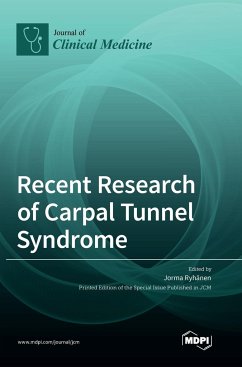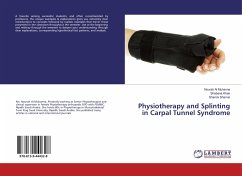Carpal tunnel syndrome (CTS) is a very common median nerve compression neuropathy at wrist level. It causes unplesant symptoms to patient as well as a financial burden for society. Conservative treatment helps with mild and transient symptoms, but often this syndrome requires surgical treatment. Surgical decompression of the median nerve is one of the most common surgical operations. If the symptom persists for a long time and treatment is delayed, this can result in a lack of sensation in the median area in addition to thenar atrophy and weakness of the thumb opposition. There are many impressive things behind CTS that we do not know yet; anatomical causes, links to other diseases and medication, occupational exposures and predisposing lifestyle risk factors. Diagnostics and differential diagnostics of CTS have their own challenges. Conservative treatment practices of CTS are diverse and unambiguous best practice is not clear. Clinical symptoms, electromyography (EMG) finding, and possible differential diagnostic challenges should be considered when deciding on surgery. Surgical treatment varies somewhat from hospital to hospital and from country to country. When the CTS diagnosis and treatment is done too late for nerves to recover or there is perioperative complication, some late reconstructive surgeries might be needed. These nerve surgery techniques can be done by experienced hand surgeons. The quality of care, complications, and cost effectiveness of different methods require further research. This Special Issue will present the latest research on this interesting and clinically significant syndrome.
Hinweis: Dieser Artikel kann nur an eine deutsche Lieferadresse ausgeliefert werden.
Hinweis: Dieser Artikel kann nur an eine deutsche Lieferadresse ausgeliefert werden.








